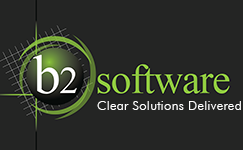How would a Web Strategy Consultation benefit your business?
People often find that they have hit an "analysis paralysis" and don't know what to do next regarding their website design, purpose, focus or technical design details. This is usually brought on by
- Too many unanswered questions
- Too much information
- Concerns about unknowns
Often, by getting answers to key questions, and truly defining what the end product looks like, a significant business leap forward can be achieved in a very short time. The many details, ideas, and technical considerations must be boiled down to their essense. This is the overall goal of the Web Strategy Consultation.
What is the purpose of a Web Strategy Consultation?
The goals of a "Web Strategy Consultation", are to help you:
- Speed project completion by adding clarity to your online business plan.
- Reduce business costs by defining and recommending key existing and emerging technologies.
-
Determine the best short-term and long-term paths to realize your goals.
- Define progression of milestones, and the major tasks in each milestone.
- Define the priority of milestones and of individual tasks.
- Define what needs be done, and just as importantly, what does not need to be done.
What happens during the consultation?
The consultation involves two in-person meetings on two separate days. Each day consists of two 2-hour meetings, with a 1 hour break in the middle.
- We find that it is best to start with overall, long-term goals and visions.
- We then proceed to refine these long-term goals to medium and then short-range actions and how it will relate to the web from a business strategy perspective.
- The goals will be used to prioritize project tasks/milestones
The process can be summarized as follows:
-
Long-term Business Plan and Goals:
- What horizontal/vertical markets, and what niche industries will this appeal to.
- What would the business/system look like if there were unlimited resources.
- What are the top product or service offerings, and can (should) they be expanded.
-
Medium-term Phases (1 year outlook):
- Based on the long-term business plan and goals, define key development phases.
- Determine priorities and a rough idea of what the phases include.
-
Short-term Milestones (3 month outlook):
- Based on the Medium-term Phases, define the milestones for each of the priority phases.
- Determine a rough idea of what the solution will look like with wire-frames and use-cases.
The time between meeting days will be used to create the initial (draft) documentation.
During the second meeting, the initial draft documentation will be reviewed to add details.
What happens after the consultation?
Additional phone calls or email correspondence may be needed to clarify any additional details.
The results of the meetings and correspondence will be used for completion of a documented summary of what was discussed and decided during the meetings.
Additional consultation may be desired to provide additional details.
Documentation Methodology
In the past, you may have experienced receiving a massive technical document that is meant more to impress than to communicate.
We feel that since the purpose of the documentation is to communicate strategy clairity and answers, we keep the documentation simple, but detailed. Our focus is on business strategy, systems design, ease-of-use, collaboration, and quick understanding.
Therefore, you will not have to wade through a massive document full of charts, pictures, graphics, and filler technical jargon that would be more at home on a marketing brochure or sales proposal.

